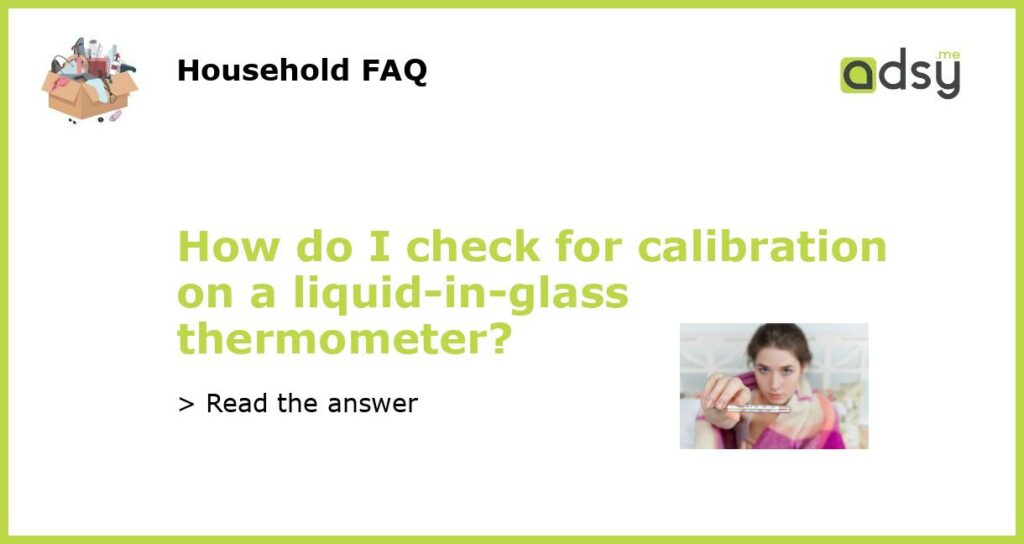Understanding Calibration on a Liquid-in-Glass Thermometer
A liquid-in-glass thermometer is a common and widely used instrument for measuring temperature. Whether you are using it in a scientific laboratory, industrial setting, or at home, it is important to ensure that the thermometer is accurate and reliable. One way to verify its accuracy is through calibration. Calibration helps determine if the thermometer is measuring temperature correctly, and if necessary, adjustments can be made to bring it back into calibration.
Why is Calibration Important?
Calibration is crucial because it ensures that the temperature readings provided by the thermometer are accurate. Without proper calibration, the thermometer may be off by several degrees, leading to inaccurate measurements. This can have significant implications, especially in scientific, medical, and industrial applications where precision is essential. Calibration also helps identify any gradual or sudden changes in accuracy, allowing for adjustments to be made to the instrument.
How to Check for Calibration
Checking the calibration of a liquid-in-glass thermometer involves comparing its readings to a known reference temperature. There are several methods you can use to do this:
Ice Bath Method
In this method, you can create an ice bath by mixing crushed ice and water. Let it sit for a few minutes to reach a stable temperature of 0 degrees Celsius (32 degrees Fahrenheit). Immerse the thermometer into the ice bath, ensuring it is fully submerged and not touching the sides or bottom of the container. Wait for the temperature reading to stabilize and compare it to the expected value of 0 degrees Celsius (32 degrees Fahrenheit). If there is a significant discrepancy, the thermometer may require adjustments or calibration.
Boiling Water Method
Boiling water is another convenient reference point for calibration. Bring a pot of water to a rolling boil, ensuring it reaches 100 degrees Celsius (212 degrees Fahrenheit) at sea level. Insert the thermometer into the boiling water, making sure it doesn’t touch the sides or bottom of the container. Again, wait for the reading to stabilize and compare it to the expected value. If there is a significant difference, calibration may be necessary.
Comparison to a Certified Thermometer
If you have access to a certified thermometer, you can use it as a reference to check the calibration of your liquid-in-glass thermometer. Place both thermometers side by side in the same environment and compare their readings. Any noticeable variations could indicate the need for calibration. However, keep in mind that the certified thermometer should be regularly calibrated itself to ensure its accuracy.
Calibration Services
If you want to ensure the highest level of accuracy, you can send your liquid-in-glass thermometer to a calibration laboratory or service provider. These professionals have the expertise and specialized equipment to calibrate thermometers with precision. They can provide you with a calibration certificate that attests to the accuracy of your thermometer and any necessary adjustments made.
Calibration is essential for maintaining the accuracy and reliability of a liquid-in-glass thermometer. By periodically checking and adjusting its calibration, you can be confident that the temperature readings you obtain are accurate. Whether you choose to use simple methods like ice baths and boiling water, compare to a certified thermometer, or seek professional calibration services, taking the time to ensure calibration is an investment in the quality and accuracy of your temperature measurements.






